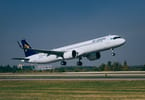Manila, Philippines – Dark clouds are forming over the local travel and tourism industry after the US Federal Aviation Administration downgraded last week the Philippines’ aviation safety rating and putting at risk the government’s targets for this year.
The implications are dire for a sector that is expected to rake in as much as $4.8 billion in revenues in 2008–more than twice the expected investments that will flow into the mining industry and about a third of the dollar remittances sent home each year by expatriate Filipinos.
In an interview, Tourism Secretary Joseph “Ace” H. Durano downplayed the immediate effects of the FAA downgrade, but conceded that there were “longer-term threats” to the tourism industry–which has only recently embarked on an upswing–if the issue of air safety was not resolved immediately.
“It is very important for us to be able to manage the perception,” he said. “What we don’t want is for foreigners to have the impression that [the Philippine aviation sector] is not safe.”
Failing to manage this perception, he explained, has the potential to give the country a black eye, not only among American flyers, but with the global travel market that still predominantly takes its cue from US authorities when issues of air safety are raised.
Durano said it was difficult to assess the immediate impact of the FAA downgrade on the Philippine travel industry, especially since it remained unclear whether the civil aviation authorities of other countries would follow suit and tighten safety restrictions on airlines flying to and from the Philippines.
The tourism chief pointed out, however, that US-Philippine travel market would be the first to absorb the body blow of last week’s decision by the FAA to lump the country in “Category 2” together with countries like Indonesia, Kiribati, Ukraine, Bulgaria and Bangladesh.
It is an unflattering grouping in the eyes of safety-conscious American travelers especially since Indonesia’s aviation sector is notorious for airline accidents and crashes, often blamed on weak airport safety infrastructure, poor training of air traffic managers and haphazard aircraft maintenance.
Major market
According to Durano, about 18 percent of the expected 3.4 million travelers that will visit the Philippines this year would come from the United States.
“This is the market that will most likely be affected,” he said, adding that the DOT’s worst-case scenario if the FAA’s decision is not reversed is to see “flat growth” for tourists from the US.
“Fortunately for us, the share (of the US) in the tourism market is going down, and this is expected to continue going down,” he added.
Nonetheless, the impact of any drop in the US inbound travel market cannot be downplayed as tourists from the United States are perennially the country’s top visitors, often jockeying for and exchanging top honors with the Korean market in any given year.
Another downside: tourists and travelers from the US–many of them expatriate Filipinos returning home to visit relatives–are also some of the biggest spending visitors in the country, shelling out almost double the median $90 a day spent by the average tourist, and staying almost twice as long as the other nationalities on the average.
This threat has not escaped the attention of the local travel industry, which is also keen to promote tourism in the country.
Setback
“[The FAA downgrade] affects the image of the country negatively, and that tends to turn off visitors, which may lead to lower arrivals,” Philippine Travel Agencies Association president Jose Clemente said in an interview. “The downgrade gives an image that our carriers are unsafe and unreliable.”
Indeed, the setback threatens to erase the gains made by the local tourism industry–made doubly critical by the fact that some of the country’s biggest firms have started to sink money into big hotel and resort projects in anticipation of the tourism boom.
DOT’s Durano said the government was doing what it could to reverse the FAA decision. Pending any upgrade, however, he said that the onus of keeping the travel industry on its uptrend fell unevenly on local airlines, especially Philippine Airlines.
“To a large degree, it will depend on them to allay concerns about the safety of Philippine air travel,” he said.
business.inquirer.net
WHAT TO TAKE AWAY FROM THIS ARTICLE:
- tourists and travelers from the US–many of them expatriate Filipinos returning home to visit relatives–are also some of the biggest spending visitors in the country, shelling out almost double the median $90 a day spent by the average tourist, and staying almost twice as long as the other nationalities on the average.
- Durano said it was difficult to assess the immediate impact of the FAA downgrade on the Philippine travel industry, especially since it remained unclear whether the civil aviation authorities of other countries would follow suit and tighten safety restrictions on airlines flying to and from the Philippines.
- Indeed, the setback threatens to erase the gains made by the local tourism industry–made doubly critical by the fact that some of the country’s biggest firms have started to sink money into big hotel and resort projects in anticipation of the tourism boom.






















